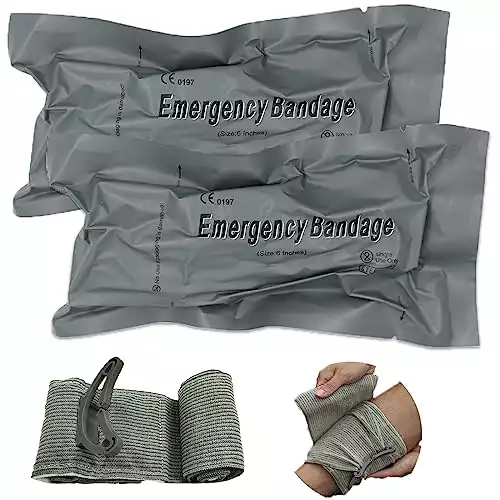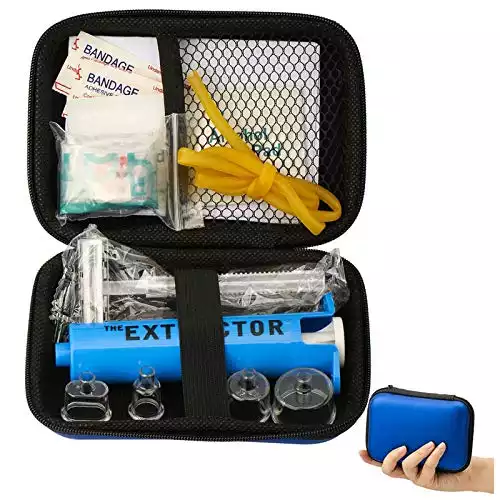Snakebite kits have been a question of debate ever since they first arrived on the market. Some of them claim to have almost magical powers, while others seem to be based on scientific research, although even their results are questionable.
Because of this, people don’t really know if snakebite kits actually help or are just a load of snake oil (pun intended).
In this article, we’ll find the definitive answer to that question and take a look at some of the most common snakebite kits.
Do Snakebite Kits Really Work?
No, there is absolutely no verifiable evidence that any type of snakebite kit can heal you. In fact, there’s only one type of snakebite kit that can actually help with a snakebite, but it’s incredibly specialized and can’t be put in the same category as other kits.
Most snakebite kits, as we’re about to find out, are based on ancient snakebite treatment beliefs, such as blood draining and sucking out the venom.
As modern medicine tells us, these methods don’t work, and some of them can actually make your injury worse. Medical professionals and toxicologists that work with snakes have debunked most of these kits and don’t recommend using them.
The biggest issue with snakebite kits isn’t that they don’t work but that people believe they do. People get bit by a venomous snake, they rely on myth-based kits instead of going to a hospital, and then they suffer tissue necrosis, paralysis, or death.
Let’s take a look at specific snake bite kits and why they do or don’t work.
1. Pressure and Immobilization Kits (Part of First Aid Kits)
Let’s start off with these kits because they’re the only ones that work.
If you’re ever bitten by an elapid (elapids are a family of snakes with neurotoxic venom), you need to apply a pressure bandage to the bite spot and immobilize the limb.
This isn’t the case with other snakes. Rattlesnakes have hemotoxic venom, for example, and using a pressure and immobilization kit would actually cause severe tissue degradation.
These kits can be lifesaving only if you’re bitten by an elapid.
By applying pressure and immobilizing the limb, you slow down blood circulation, which prevents the venom from spreading. This isn’t something you should do if you’re bitten by other snakes, but it is the recommended course of action in the case of snakes with neurotoxic venom.
Neurotoxic venoms cause paralysis and loss of consciousness, among other things, so it’s important to delay the venom’s effects as long as possible. By staying awake and responsive, you’re essentially buying yourself time until you get to a hospital.
These kits contain triangular bandages you can use for immobilization and compressive bandages and gauze that will cut off blood circulation. Note that tourniquets aren’t a suitable replacement for pressure and immobilization.
2. Venom Extraction Kits
There are hundreds of different venom suction kits available on the market. They all sell pretty much the same story — make a small cut around the wound (the snakebite) and use the revolutionary tool to suck the venom out.
First of all, it’s impossible to achieve this because the venom mixes with your blood as soon as you’re bitten by a venomous animal. So, to suck the venom out, you’d have to literally suck your own blood out.
For a suction kit to work, it would need some type of venom-blood diffuser, which doesn’t exist (yet).
Second, even if these devices could somehow suck out the venom while leaving the blood in your body, it’s impossible to suck all the venom out. Venom spreads around your body at an astonishing rate, and these tiny devices would have to “clean” the entirety of your blood supply, which is impossible.
The final reason it’s impossible to suck the venom out is the curvature of snake fangs, which naturally curve backward. The path from your blood vessels to the suction device is not easily passable and it’s almost impossible for venom to go back the same way it came.
A toxicology report written by Sean P. Bush, MD, appropriately titled “Snakebite Suction Devices Don’t Remove Venom: They Just Suck,” analyzed the Sawyer Venom Extractor and outlined just how useless it is.
The Sawyer Extractor is by far the most popular venom extractor on the planet, and its manufacturer managed to scam millions of people, convincing them it’ll suck the venom right out.
However, the testing of the Sawyer Extractor proved that it removes, on average, between 0.04% and 2% of snake venom, thus proving that it’s completely useless. Two additional studies yielded the same results.
So, let’s learn this lesson once and for all: Venom extraction kits are a scam, and they don’t work.
3. Venom-Trapping Kits
A new form of kit only recently hitting the market claims to slow down the spread of venom. To quote the designer of Venom Locc, the kit will “trap venom at the site of the snakebite and lower the risk of shock and death.”
That is simply untrue, and this kit wasn’t tested by any relevant authority. But even if it were true, trapping venom at the site of the snakebite would actually be detrimental.
First of all, slowing down the spread of venom is bad for you (unless you were bitten by an elapid). If you really do cut off blood circulation and slow down the spread of venom, you can lose your limb because of the concentration of venom in one place and the resulting tissue damage.
Medical professionals strongly advise against trying to slow down the spread of venom by cutting off the blood supply.
Second, putting pressure on the snakebite and immobilizing the limb would be useful in the case of an elapid bite, but this kit hasn’t proven to properly put pressure on the snakebite, and it certainly isn’t immobilizing anything.
Also, the product description says the kit was clinically shown to slow down the spread of snake venom by trapping it. The references, however, don’t mention any clinical trials of the product, only two studies of snake envenomation that prove slowing down the rate of envenomation delays death.
This is not news to the medical community; doctors know that slowing down the rate of envenomation delays death, but they don’t recommend you do it because you’ll lose your limb (and the venom will eventually spread throughout your body either way, so you’re not achieving much).
The product references Australian research that shows promise with the “pressure and immobilize” method. The reason that method works on Australian snakes is that almost all venomous snakes in Australia are elapids.
It also references research conducted in the US on coral snakes, which are, you guessed it, elapids (the only elapids in the US).
Neither of these studies actually tested this product; they used compressive bandages instead.
All of that makes this an untested product that claims to slow down the rate of envenomation (which isn’t necessarily a good thing) while using studies conducted on a very specific family of snakes as a justification for its purpose.
All in all, this product isn’t a solution for snakebites. It probably does slow down blood circulation, thus slowing down the rate of envenomation to a certain degree (although it hasn’t been tested by an independent authority, so we can’t know for sure), but this goes directly against medical advice.
Even if you were bitten by an elapid, the instructions are to apply compression bandages, not some random, untested product from the internet.
Instead of investing in a snakebite kit, save your money, learn what to do if you see a snake, and focus on getting medical help as quickly as possible if you are bitten by a snake.


















